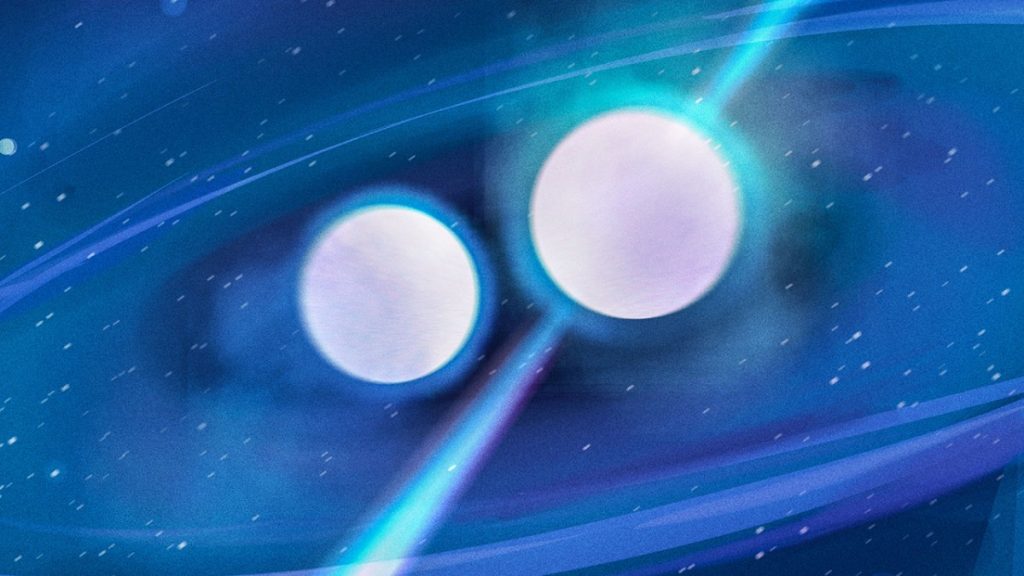
One of the things that makes astronomy frustrating is the timescales on which things occur. From explosions that take moments to stellar evolution that takes millions of millennia, it seems that things always happen too fast to readily see or too slowly to really watch.
Back in 2017, a significant fraction of the world’s astronomers were involved in observing the gravitational waves, light, and particles that were associated with the merger of two neutron stars. We have no way to see exactly what is in that system now. We have no images documenting how this merger happened. All we have is that August 2017 data.
And we want more.
Luckily for us, the universe is big, and what happens in one place can happen again in another place, and has probably happened before somewhere else. It turns out that when it comes to neutron star mergers, there is a pair prepping for their unification right here in our own galaxy.
In a new paper in the journal Nature, researchers led by Robert Ferdman have modeled how the uneven masses of the two pulsars in the binary PSR J1913+1102 will someday merge and generate their own version of that 2017 event. While we can’t go back and see that system, this one will help us understand what that one must have been like.
J1913+1102 contains both a 1.63 solar mass and a 1.27 solar mass neutron star. According to this new research, when these uneven masses merge, they will eject more material in the resulting explosion than would otherwise be expected.
While observing this system is amazing, and it gives us a look at the final days of an ancient system nearing its ultimate end, astronomers are going to have to wait a while to watch: it’s estimated these two pulsars won’t merge for another 500 million years.
It had previously been thought that binary systems typically consist of stars of fairly equal masses. This discovery, as well as others including a very uneven black hole merger we discussed recently, are showing us that once again, the universe is far more complex than we often give it credit for. While astronomers often do science with the motto “when you hear hoof falls look for horses, not zebras”, it turns out the universe isn’t filled with just zebras; it’s filled with centaurs and other crazy creations we didn’t leave room for in our science.
More Information
Cornell University news article
The University of Central Florida news article
“Asymmetric Mass Ratios for Bright Double Neutron-Star Mergers,” Robert. D. Ferdman (University of East Anglia, Norwich, England), Paulo Freire (Max Planck Institute for Radio Astronomy, Bonn, Germany), Benetge Perera (Arecibo Observatory), Nihan Pol (West Virginia University) et al., 2020 July 8, Nature




 Join the Crew!
Join the Crew!
 Escape Velocity Space News
Escape Velocity Space News
0 Comments